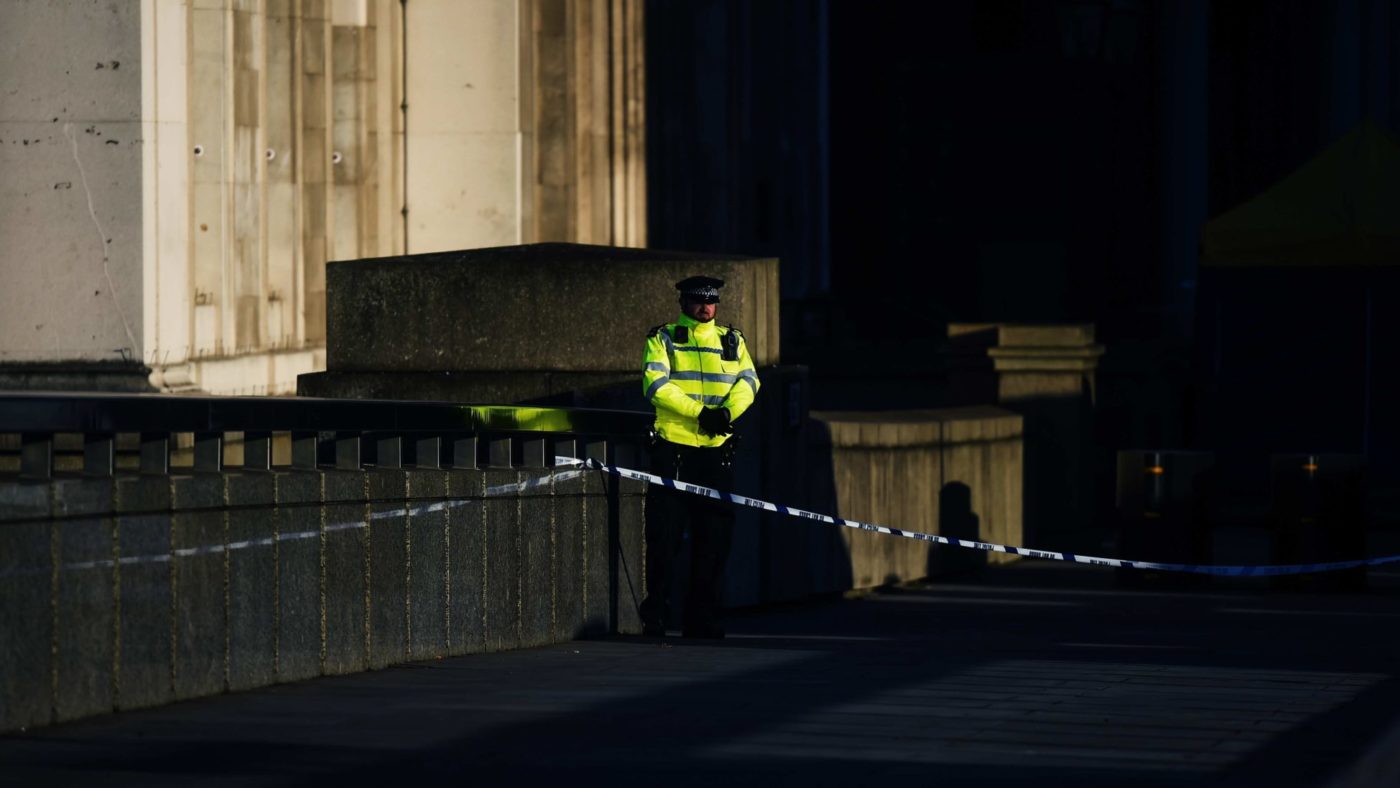As more details of the background of Usman Khan are released, the more ridiculous the build-up to last Friday’s deadly terrorist attack appears to the broader British public.
Usman Khan was convicted for being part of a terror plot to bomb the London Stock Exchange, and also planned to establish a terrorist military training facility on his family’s land in Kashmir. During his time in prison, he behaved aggressively towards staff. Released within seven years of a sixteen-year sentence, Khan went on to kill two people in a terrorist attack at Fishmongers’ Hall in the heart of London.
Khan had also completed two counter-terrorism courses which have yet to be “fully tested” in terms of their “effectiveness”. He participated in the Home Office’s Desistance and Disengagement Programme (DDP), which seeks to provide “tailored interventions” which help to address “personal grievances exacerbated by extremist narratives”. It is safe to say that state-run rehabilitation courses for convicted terrorists are not currently enjoying high levels of public confidence.
As a Researcher of terrorism and rehabilitation, I have been questioned during a number of media appearances on how we should move forward in regard to counter-radicalisation and the role rehabilitative “deradicalisation” schemes can play. In the hope of spurring on a much-needed debate, I have identified five areas in need of further attention:
Stronger differentiation between “violent” and “non-violent” radicalisation
Radicalisation is very much a “catch-all” term which needs to be disaggregated. When considering convicted terrorists for rehabilitation schemes, it is important to understand the “severity” of radicalisation – and this includes making the difference between “violent” and “non-violent”. The former refers to processes which lead to clear violent intentions driven by ideological motivations, or supporting extremist objectives being achieved through violence. The latter alludes to a situation where individuals may hold radical views in relation to the social and political status quo, but do not undertake, aid, or abet terrorist activity. Non-violent radicalisation would not include those who are part of foiled plots to carry out “high-impact” terrorist attacks, or those who actively participate in fundraising activities for extremist endeavours (such as creating terror-training camps abroad).
Extensive analysis of past behaviour and conduct during imprisonment
When those convicted of terrorism-related offences are considered for rehabilitation schemes, their criminal history and general conduct in prison needs to be critically evaluated. Serious red flags would include having a history of being dishonest towards public authorities, or committing crimes which involved the adoption of deceptive measures and misleading others (including “close” family members). Deradicalisation schemes such as DDP are unfortunately open to the risk of users “duping” counsellors into believing that “successful de-radicalisation” has taken place, when in reality they remain hardened fundamentalists who may harbour aspirations to carry out terrorist attacks.
Rigorous psychological assessments by trained professionals
Following the London Bridge attack, public authorities have understandably been coy about divulging further details of rehabilitative courses such as the Home Office’s DDP programme. Public knowledge of the quantity and quality of psychological professionals and criminological researchers operating with such programmes, remains low. It is crucial that experienced psychological experts and seasoned criminology practitioners make rigorous assessments of prevailing behavioural characteristics and personality traits. An individual may be considered “high risk” if they rank highly on “cognitive susceptibility” indicators such as anger, impulsivity, and thrill-seeking (all of which are strongly associated with far-right, lone-wolf terrorist activity). It is extremely important that in this context, a critical approach is adopted.
The prospects for full ideological disengagement
Inspecting deradicalisation courses across a range of countries including the UK, Colombia, and Yemen, psychologist Dr John Horgan concluded that one of the main problems, was that “actual de-radicalisation” is rarely a feature of such programmes. Working closely with those convicted of terror-related crimes, Horgan pointed out that while former terrorists may reject violent action in any shape or form, they may still retain their radical beliefs and continue supporting an extremist worldview which is fundamentally incompatible with the mainstream political culture. Reversing support for violent action is clearly insufficient. If those rejoining society disavow violence but remain firmly attached to extremist views, they still represent a worrying risk pool that can be responsible for the radicalisation of others in local communities. We must set the bar higher than merely helping individuals towards a “non-violence” position.
Addressing the ideological vacuum
This is a particularly challenging and sensitive area of discussion. Even in a situation where there has been “successful disengagement” from a dangerous extremist worldview, there remains an “ideological vacuum” which can be exploited for nefarious purposes. The articulation of an anti-extremist alternative body of values is critical in this context. As a counter to Islamist extremism, a reformist British liberal Islamic movement is needed to challenge orthodox religious fundamentalism. Providing a modern re-interpretation of traditional understanding and practice, this could take the form of a transformative “British Islam” which combines Islamic duties with respect for post-Enlightenment values such as rule of law, democratic choice, and gender equality. In addition to this, “re-integration” efforts must be based on social cohesion initiatives which enable the development of bonds of social trust and mutual regard beyond one’s own ethnic and religious group.
Concluding thoughts
Even after discussing these points, there are a number of difficulties which are near-insurmountable. It will always be extremely difficult to quantify and effectively measure what a “successful deradicalisation outcome” actually constitutes – and if it has genuinely taken place. Therefore, the focus must be being more alert in identifying “red flags”, and minimising the element of risk which is inevitably contained within rehabilitative de-radicalisation schemes.
But the “risk-reward trade-off” must ultimately be in favour of broader public safety.
Click here to subscribe to our daily briefing – the best pieces from CapX and across the web.
CapX depends on the generosity of its readers. If you value what we do, please consider making a donation.


